DP Ed Rutherford's command over KODAK S16mm Film and the set-to-screen workflow delivers a dramatic result for Joanna Hogg's 'The Eternal Daughter'
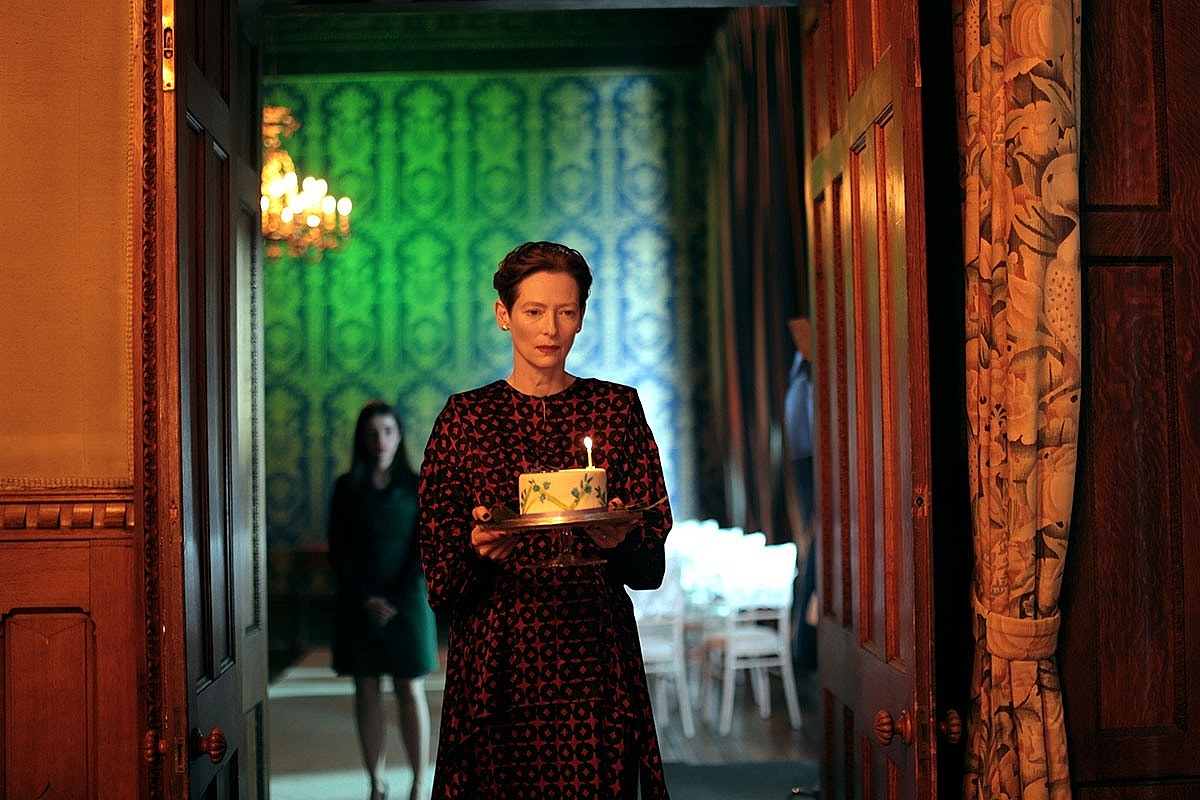
Tilda Swinton in "The Eternal Daughter." Photo by Sandro Kopp. Courtesy of A24. © Eternal Daughter Productions Limited/ British Broadcasting Corporation.
Harnessing Kodak 16mm film to capture the creepy atmosphere at a hotel, where things go bump in the night, The Eternal Daughter, written, produced and directed by British filmmaker Joanna Hogg, explores themes about mother and daughter relationships, the preservation of memories and the personal reconciliation of parental loss. Hogg called on the talents of cinematographer Ed Rutherford, who had previously shot Archipelago (2010) and Exhibition (2013) for her, to bring the supernatural story to the big screen.
Filmed in secret during the Covid-19 pandemic, the film opens with Julie, a filmmaker, and Rosalind, her recently widowed mother, riding together in the back of a taxicab to a secluded hotel, deep in the foggy countryside. Bedecked with Gothic spires and chiseled gargoyles, the place was once a private hall, owned by Rosalind's aunt, and is where Rosalind lived for a while during her youth, including time spent as an evacuee during The Blitz. Julia is trying to write a film about Rosalind and is taking her off for a birthday-weekend treat, hoping that being with her elderly parent in familiar surroundings will help her learn a little more about her mother's past.
Once inside the hotel, where they seem to be the only guests, Julie surreptitiously records their conversations at dinner and before bedtime. Rosalind's recounts various reminiscences – fond recollections of how things used to be, as well as some unpleasant reminders of long-buried regrets, including a miscarriage.
Unsettled by what she hears, Julie is equally unnerved by the hotel itself – the grounds are persistently foggy, windows rattle in wind, the place shudders and groans of its own accord, and Rosalind's dog, Louie, takes to whining and scratching at the bedroom door. It sometimes sounds as though children are running along the shadowy corridors, and a woman might be weeping somewhere nearby. Julie finds she can neither write her script nor sleep in a place that holds positive and negative emotions for her mother, and begins to question herself and her motives.
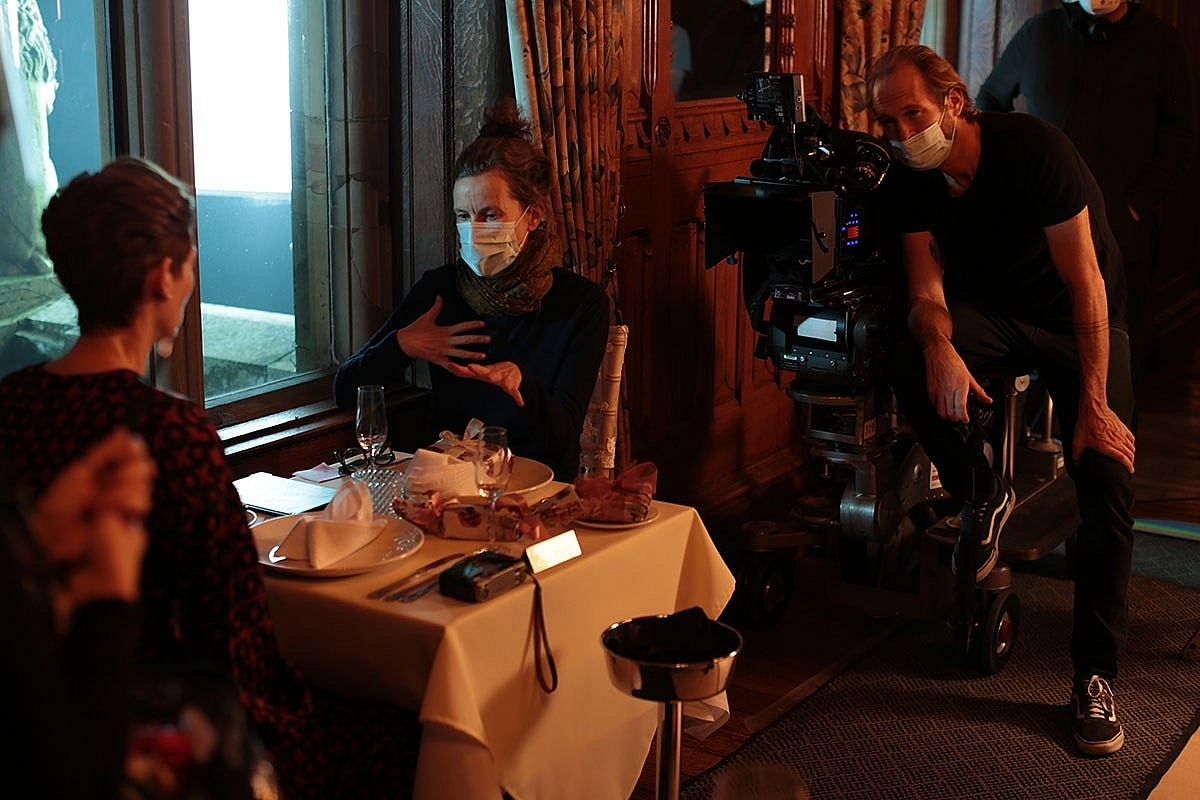
Tilda Swinton with director Joanna Hogg, on the set of "The Eternal Daughter," with DP Ed Rutherford at the 16mm film camera. Photo by Sandro Kopp.
Produced through A24, BBC Films and Element Pictures, with Martin Scorsese as an executive producer, the film premiered at the 2022 Venice and London film festivals. Critics applauded Hogg's storytelling and the performance of Tilda Swinton in the dual roles of both Julie and Rosalind. Apart from one scene in which mother and daughter appear on screen together, the pair are never in the same shot, and the technique of cutting back-and-forth between shot/reverse during their conversations serves to heighten the sense of the paranormal.
The Eternal Daughter was filmed at Soughton Hall, a Grade II listed country house hotel in Sychdyn, Flintshire, Wales, where principal photography took place over the course of 35 shooting days during November and December 2020.
"Immediately in prep, Joanna insisted that I visit the location she had found but didn't want to share anything about it in advance, not even a photograph," Rutherford reveals. "She wanted me to experience it without prior knowledge. However, she did encourage me to read Rudyard Kipling's tragic poem 'The Children,' which speaks for parents bereaved by war, and his grief-stricken short story 'They,' which contains the echoes of ghostly voices in a fantastic house, to put me into certain a frame of mind."
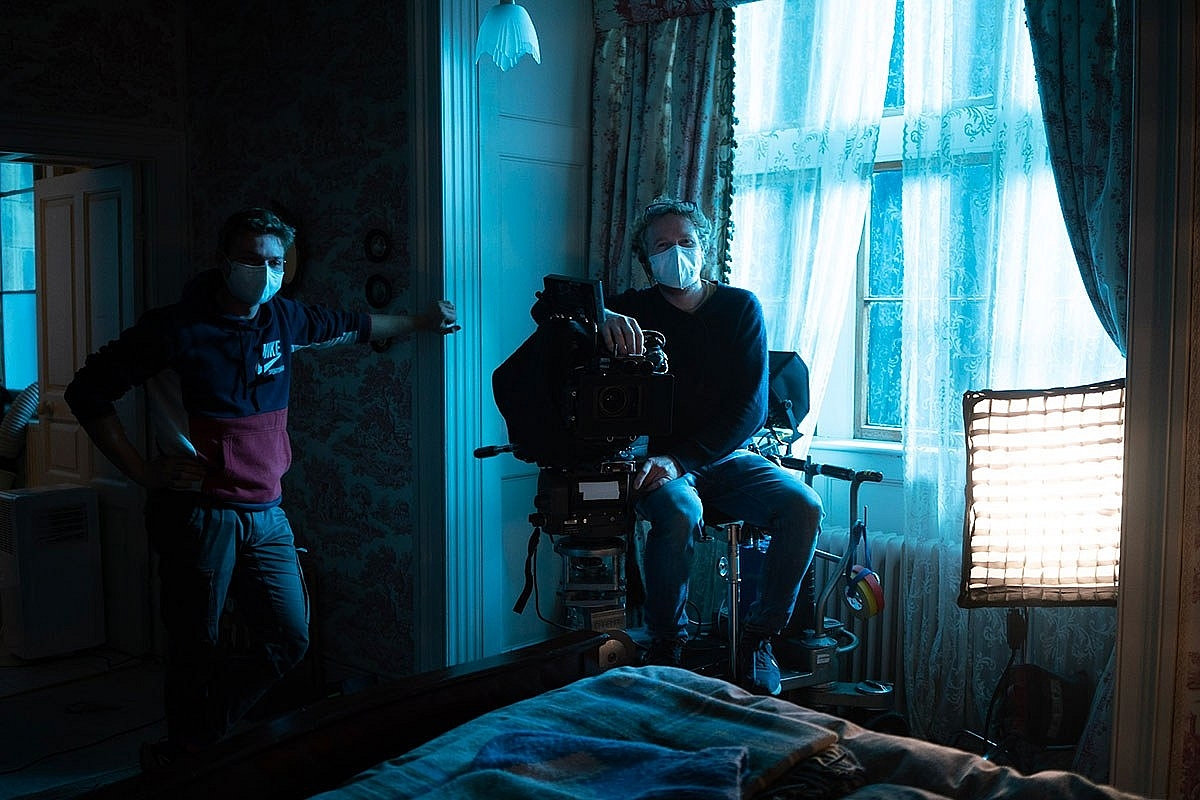
1st AC Tristan Haley on the dolly during production on "The Eternal Daughter." Photo by Sandro Kopp.
Hogg also presented Rutherford with what he describes as, "a tone poem – a statement to set the scene containing broad outlines of the stage direction. Joanna has a unique and unconventional screenwriting process in that there isn't a traditional script with dialogue per se, rather it's a statement of intent. I recall her document for Archipelago being nine pages, and Exhibition was something like 14. But this one was just three pages."
Explaining Hogg's approach to filmmaking in more detail, Rutherford says, "Joanna's process is to workshop the film in chronological order, variously with the actors and the camera team. The spoken words and the rhythm of those words get refined, as do the ideas about framing the picture. That workshopping process is an ongoing thing throughout the production cycle. You might think that this approach would have ramifications to the schedule, but Joanna is incredibly well organized. She always allows time to rethink and revisit scenes if they are not quite singing when the film starts rolling through the camera."
He adds, "Whilst it's an unusual approach to making a film, the key thing for me is the atmosphere it creates around the cast and crew. Joanna is a hugely encouraging presence. She listens, makes people feel comfortable, and her process gets everyone in tune about the intention of a scene and the emotional beats. That's always a great place to be and thrilling to be a part of."
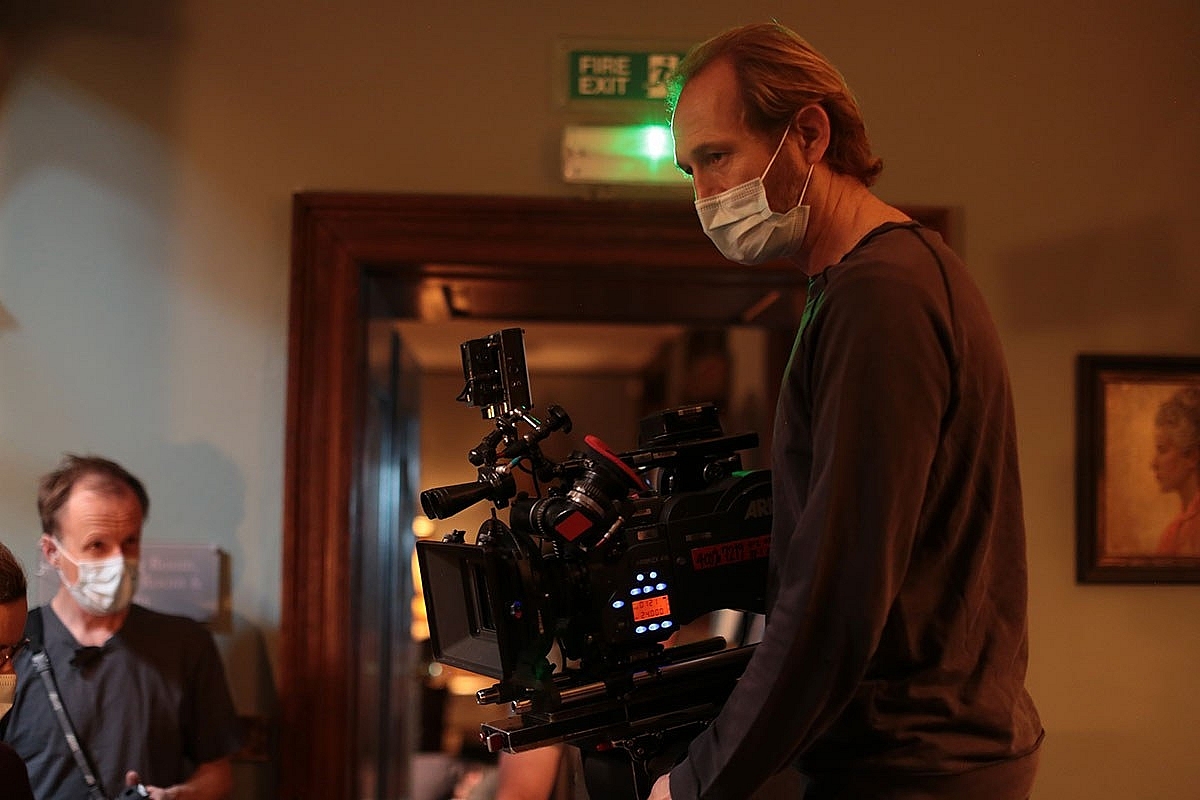
DP Ed Rutherford at the 16mm film camera during production on "The Eternal Daughter." Photo by Sandro Kopp.
Whilst shooting on film was a given from the start, the choice of whether to capture on 35mm or S16mm was still to be decided. Rutherford shot comparative hair and makeup tests with Swinton on both formats, and took counsel from Sam Clark, Kodak UK's Director of Sales, colourist Jodie Davidson at Technicolor, and the scanning/dailies team at Digital Orchard, to consider the technical workflow and the quality of the final results.
"My chief concern during prep was about quality control – making sure that the dailies would retain the same look throughout the entire production pipeline, from set to post, and to the screen," Rutherford explains.
"Employing LUTs that I created with Jodie, we reviewed the 2K and 4K scans of the S16mm and 35mm tests, and I have to say the 4K 16-bit DPX scans of the S16mm footage looked fantastic. You could feel the grain structure in the filmed image, and the higher-resolution was such that I knew I would be able to dig into shadow details in the lower-light scenes if need be during the final grade. The nature of the arrangement between the different parties involved, meant it was both logistically and financially-viable to get all of the rushes scanned to 4K.
"Also, it was agreed early on to adopt ACES [Academy Color Encoding System] in the post production workflow. The color conformity it provides between different departments assured there would always be clarity when it came to aesthetic discussions throughout the process. As we were going to be working in North Wales, all of this gave me a great deal of confidence and reassurance during the shoot."
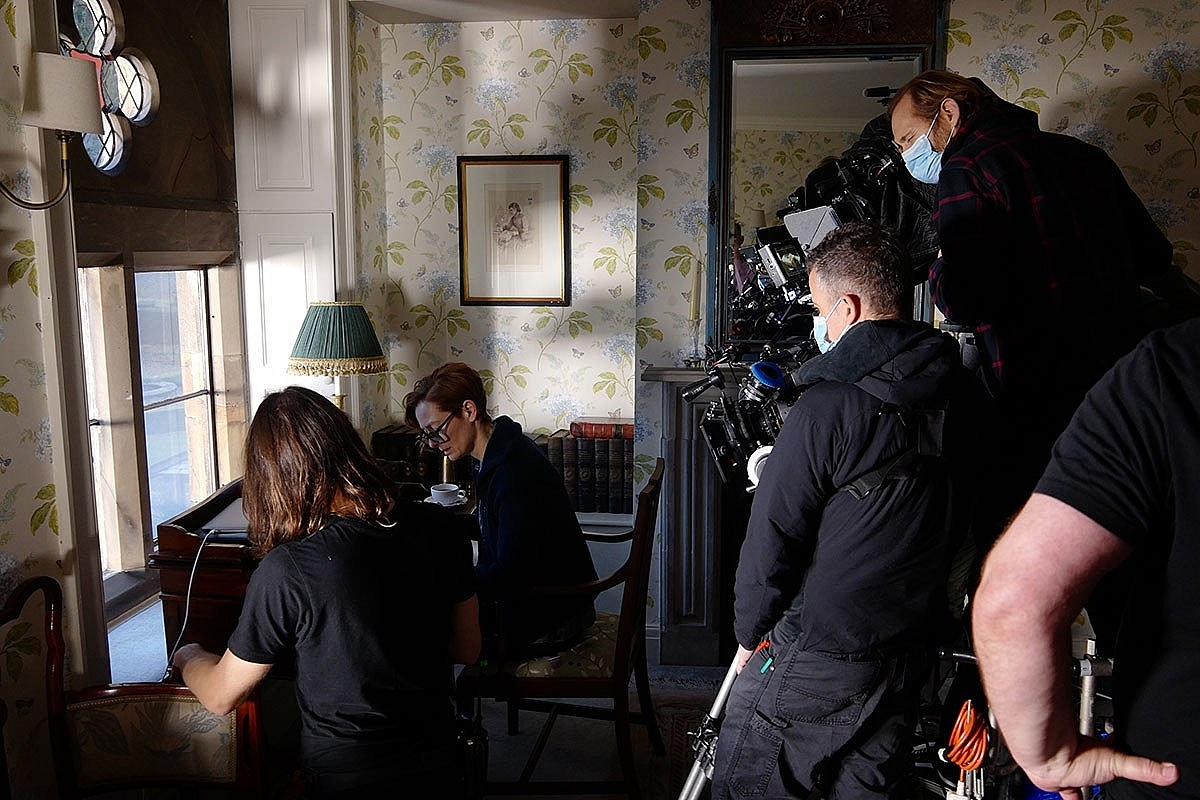
Filming a scene with Tilda Swinton (middle) on "The Eternal Daughter." Photo by Sandro Kopp.
With the workflow in place, Rutherford went with ARRIFLEX 416 16mm cameras and rehoused Zeiss 16mm Superspeed lenses for the shoot, provided by Panavision, London.
"The Superspeeds are sharp, with great contrast, but are slightly softer than the Ultra Prime alternatives and the colors they render are a bit cooler too. AT T1.3, they are high speed, which was a big consideration with so much of the film playing at night."
Rutherford went with KODAK S16mm Tungsten stocks for the mainstay of the shoot – KODAK VISION3 500T Color Negative Film 7219 for night and low-light scenes, and KODAK VISION3 200T Color Negative Film 7213 for the interior/exterior days. He also used KODAK VISION3 50D Color Negative Film 7203 for the film's denouement.
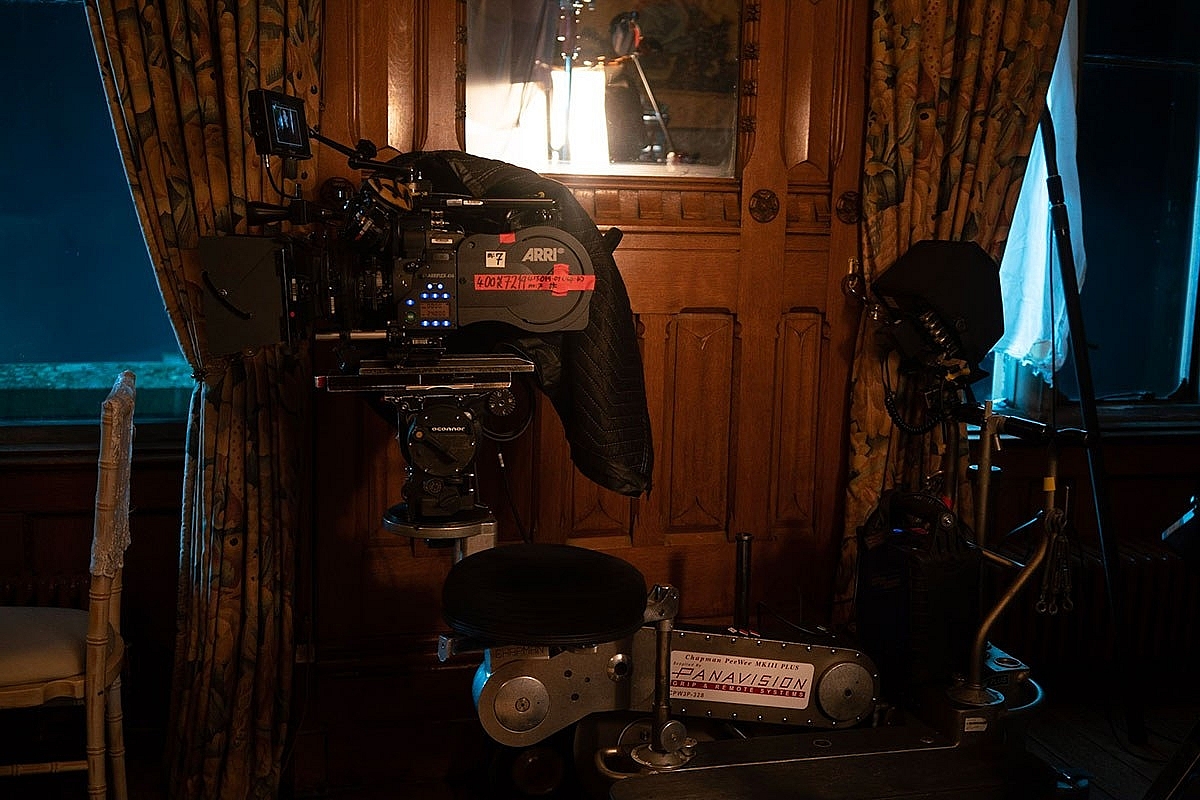
An ARRIFLEX 416 16mm camera ready for action on the set of "The Eternal Daughter." Photo by Sandro Kopp.
"The 500T and 200T work very well together in terms of the consistency of grain, color and contrast in the image," says Rutherford. "On a practical level, they are also incredibly versatile. We were shooting during the pandemic, and if push came to shove on stock levels, due to any transport delivery issues to our remote location, I knew I could throw them both ways exposure-wise and that we could continue shooting.
"For the ending of the film, I wanted a distinct change in color and luminosity, and experimented with pushing the 200T and even tested KODAK EKTACHROME [Film]. Whilst these certainly delivered different and interesting looks, they didn't feel quite right for the context, so I ended up going with the 50D 7203 as that gave us a strong and most appropriate aesthetic motif for that scene."
Rutherford says Hogg's decision to depict Julie and Rosalind separately was a masterstroke in creating a sense of otherworldliness, and he enjoyed the process that entailed on set.
"Tilda was incredibly committed to both of her characters and the task in-hand to make it all happen," Rutherford recounts. "This typically involved her performing Julie's part in a scene during the morning, getting fitted with prosthetics and made-up as Rosalind during lunch, and then shooting Rosalind's part in the afternoon.
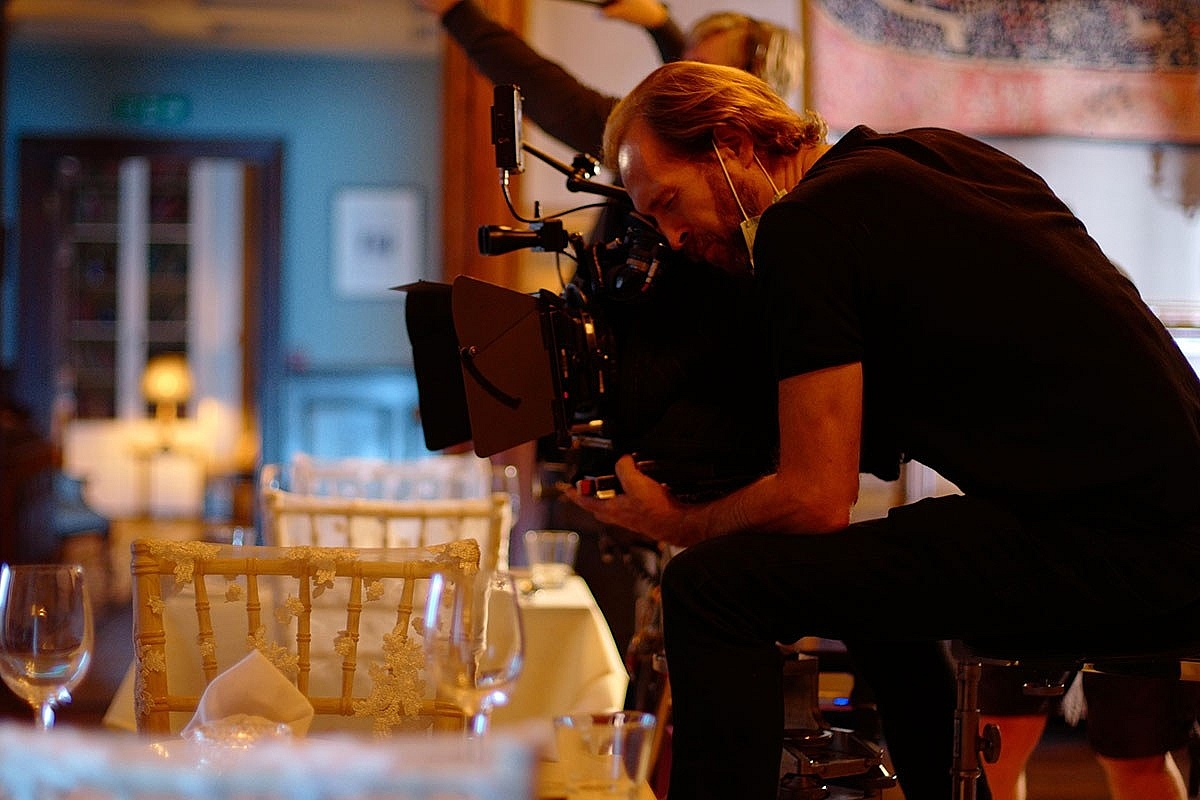
DP Ed Rutherford at the 16mm film camera during production on "The Eternal Daughter." Photo by Sandro Kopp.
"Although we investigated and budgeted for using artist doubles, modern VFX trickery and CGI face replacement to put both of our characters in-shot simultaneously, Joanna's brave decision to depict Julie and Rosalind separately created a visual language that really played to the sense of things being off-kilter."
In conclusion, Rutherford confides, "I was nervous about seeing the film when it was projected at the Royal Festival Hall during the London Film Festival. But I needn't have worried. It held up incredibly well visually, and proved to be a fantastic moviegoing experience. It was a lovely feeling to know that the looks and qualities of the imagery we had captured on S16mm film at our remote location in Wales had tracked all the way through the workflow and on to the big screen. That was impressive!"